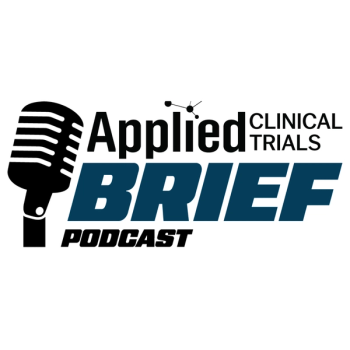
Empowering Clinicians to Communicate Clinical Trial Opportunities Effectively
In this video interview, Matt Robinson, PhD, senior director, oncology research program, National Comprehensive Cancer Network (NCCN), highlights the importance of equipping site staff and caregivers with tools and best practices to effectively communicate clinical trial opportunities to patients and improve enrollment rates.
In a recent video interview with Applied Clinical Trials, Matt Robinson, PhD, senior director, oncology research program, National Comprehensive Cancer Network (NCCN), discussed the current state and challenges of cancer patient participation in clinical trials. Barriers to participation can include lack of understanding, economic burdens, and implicit biases. Robinson highlighted solutions such as increased education, legislation like the Clinical Trials Modernization Act, and engaging patients early in trial design. He also touched on the use of technology, such as biomarker testing and wearable devices, which can also enhance recruitment and reduce burdens.
ACT: Can you discuss the importance of training and supporting site staff to effectively communicate trial opportunities to patients?
Robinson: Absolutely, I think there's lots of opportunities to educate both caregivers and patients. I think the data would support the idea that about 50%, maybe even three quarters of patients would participate if asked, but only 20% of them are being asked. So, how do we bring that number up and get more people involved? One way is certainly to develop best practices procedures, to better equip or educate our caregivers, is one way. An example of how that how the NCCN is working to do that is through the Health Equity Report Card. It's a tool designed to provide best practices for those caregivers, and one of the outcome measures is a tool that includes or encourages providers to have clinical trial conversations with their patients. At the most recent annual conference held by NCCN last March, they had a best practices session where clinicians, advanced practitioners, etc. could go and learn about how to engage patients, understanding that important details need to be delivered by knowledgeable staff, how to do it in a comfortable environment, using patients native languages, etc., providing take home materials that are in plain language so that a patient can actually go and digest it after having gone home from the hospital. Also, videos from other patients who have participated in clinical trials, to get that patient perspective is also an important way that you can educate.
Patients should also be able to understand the purpose and the risks of the studies. I work in the Oncology Research Program at NCCN, and one of one of my jobs is to oversee the IRB director's form there, and the IRB is a governing body at institutions that makes sure that clinical trials are held to the most rigorous ethical standards, and that group has put together a plain language database that can be used by clinicians and others to develop the informed consent documents, those documents that help explain to patients what's going to happen, what their data are going to be used for, etc., so plain language is a key point, and similarly, the NCCN Foundation has developed patient oriented guidelines that explain disease and treatment approaches, again, in plain language for those patients. Lots of opportunities.
Newsletter
Stay current in clinical research with Applied Clinical Trials, providing expert insights, regulatory updates, and practical strategies for successful clinical trial design and execution.




